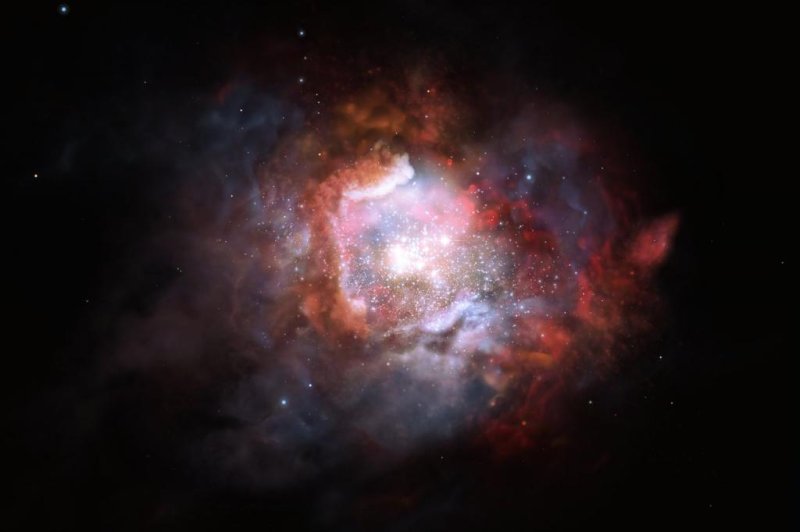An artist's rendering of a starburst galaxy. Photo by ESO/M. Kornmesser
June 5 (UPI) -- New surveys suggest starburst galaxies, both nearby and in the distant universe, host a greater number of a massive stars than more peaceful galaxies, challenging popular theories about galactic evolution.
Using the Atacama Large Millimeter/submillimeter Array and Very Large Telescope, astronomers observed several starburst galaxies in the distant universes, or early universe. The images revealed galaxies as they were shortly after the Big Bang.
To determine the ratio of massive stars found in the faraway galaxies, scientists compared the ratios of two carbon monoxide isotopes found in each. Certain carbon monoxide ratios are only produced by large stars. The isotope ratios measured using ALMA and VLT showed the distant galaxies hosted a surprisingly large amount of massive stars.
Massive stars burn hotter and brighter, but live shorter lives. Their prevalence alters the chemical makeup of a galaxy, affecting the elements available for future star generations and planet formation.
While scientists were surprised to find so many large stars in the early universe, the latest findings -- detailed in a pair of newly published papers -- suggest continuity between the distant universe and the local universe.
A recent survey of the star-forming region 30 Doradus in the Large Magellanic Cloud revealed a surprisingly large population of massive stars.
"We found around 30 percent more stars with masses more than 30 times that of the sun than expected, and about 70 percent more than expected above 60 solar masses," Fabian Schneider, astronomer at the University of Oxford, said in a news release. "Our results challenge the previously predicted 150 solar mass limit for the maximum birth mass of stars and even suggest that stars could have birth masses up to 300 solar masses."
"Our findings lead us to question our understanding of cosmic history," said researcher Rob Ivison. "Astronomers building models of the universe must now go back to the drawing board, with yet more sophistication required."















